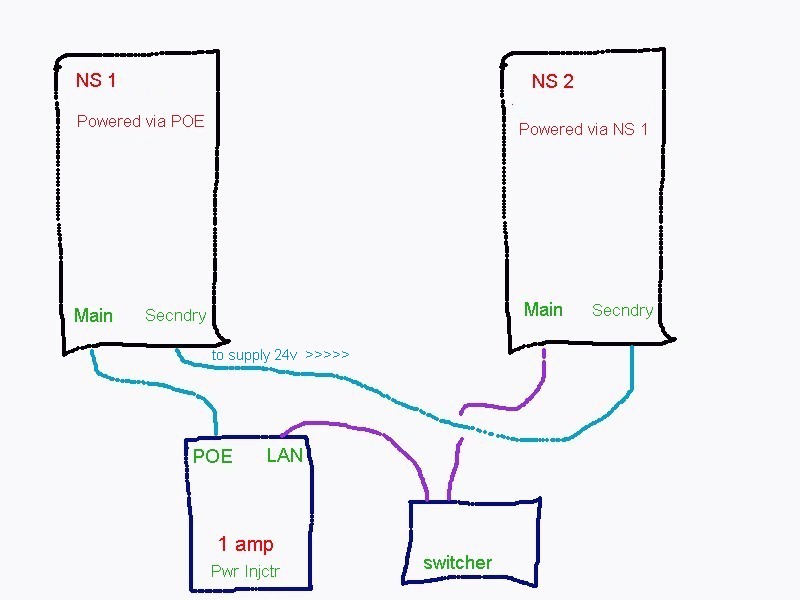UPDATE; it was not the AirRouter, read the responses for details !!!
I thought I had read an earlier discussion on this specific, but was unable to find it.
I was testing a known good AirRouter HP ... specifically using the DTD port 4 for node connecting to a NanoStation NSM5; all nodes using the full 3.16 flash (not the beta). My computer connected to ports 1,2,3 on the AirRouter
I connected a powered known-good NanoStation M5 into port 4 of this AirRouter HP, but the NS never appeared on the AirRouters Mesh Status page. Thinking this AirRouter was misbehaving... I took out another AirRouter HP (also known good) and the same thing happened... the NanoStation NSM5 did not appear on the status page even though it was ethernet connected to the AirRouters port 4..
What is required for the AirRouter to DTD (ethernet link) to another node?
You are here
AirRouter HP oddity
Thu, 06/30/2016 - 21:32
#1
AirRouter HP oddity
Theme by Danetsoft and Danang Probo Sayekti inspired by Maksimer


NSM5 XW - main port: LAN only
NSM5 XW - secondary port: DtDlink and WAN only
Note, you can power NS's from the secondary port--a few forum posts on this.
Joe
The understanding is your back feeding a mosfet and all the protection circuitry is on the other side. Fried mosfets are not unheard of as are rumors of full device failures.
Some of these scenarios include power always leaking from the primary port to the secondary port and when you go to plug in a non POE device it gets straight voltage into its pins.
In the end it's generally not worth back feeding from the secondary port.
The experience so far says the risk doesn't jump up to damage these devices left and right. The long term (years) usage of doing this is unknown, however.
yes, it is a XW for the Nanostation... I will give that secondary port a try.


FYI; on my NSM5 (XM) array (4 NSM5's - all on different 5.8 channels):
I am only using two POE's to power all four NanoStations. I modified the NSM5's... jumping across the FET transistor (that switches the power from the Main to Secondary port) so that the Secondary port had power at all times now. (this was done over a year ago, with XM NanoStations and BBHN; back then the secondary port had no data capability... and power was not activated to that secondary port either). I forget which power line (either the plus or minus) that the FET interrupts, but I just simply soldered a jumper wire across the jacks on the inside.... on that one power "side" that was interrupted by the FET).
Here is how they were cabled in pairs (two pairs total):
These have been running for 18 months now, no issues.
The only thing gained by doing this is that I only had to use two 1A POE's to power all 4 NSM5's. Voltage is present on the two CAT5e cables coming down from the NStations that do not go through a POE; ; fortunately the cheap 10/100 switch I combine them together with ignores pins 4-5, 7-8 (these "voltage" pins are missing on the jacks)... so this is where the voltage is stripped off.